SuperBuickGuy
Well-known member
The bolts hadn't changed from that 1st picture to the 2nd - yet somehow the driveshafts actually are at a different angle.
well, continued with the finish-it-up list
to remind, here is the rear end before, note the driveshafts go down to the wheels?
now - much better
the theory being, with the driveshafts as the upper control arm, you want them to pull in and the bottom to push out (more camber) in a corner.... now it'll finally do so correctly.... sad thing, I've no idea how I managed to get it lower - car sits at the same ride height
and the interior... new steering wheel, and now full dash lights (special, huh?)
I just need to find a new brake console (will check with friend tomorrow).... finally down to the last little bit list :thumbs:

well, continued with the finish-it-up list
to remind, here is the rear end before, note the driveshafts go down to the wheels?
now - much better
the theory being, with the driveshafts as the upper control arm, you want them to pull in and the bottom to push out (more camber) in a corner.... now it'll finally do so correctly.... sad thing, I've no idea how I managed to get it lower - car sits at the same ride height
and the interior... new steering wheel, and now full dash lights (special, huh?)
I just need to find a new brake console (will check with friend tomorrow).... finally down to the last little bit list :thumbs:
You may have improved your camber gain but you definitely made your toe steer much worse.
Sent from my SAMSUNG-SGH-I747 using Tapatalk 2
My observation -
Maybe jump on it, roll around the shop. bounce the rear, etc. They may be threaded the same - but not riding the same on the TAs - at least in that composite of before/after - admit they are left/right too - but i expect they ride symetrically - just looking at the spring.
As an overall ROT - longer bolts will lower the ride height with the monospring.
Good Luck and, Cheers - Jim
Different spring rate between the two springs. They are differing thicknesses... Just sayin'
As to the toe issue - all stock C3 TAs have an inherent toe problem - Revolutionary design for its time -- BUT.
Consider the center of rotation at the forward mount - as the TA swings up and down, the fixed length half shaft and lower strut do their thing -- but the forward rotation point of the TA, changes the toe setting as the IRS moves through an entirely different arc during its up and down motion.
We are stuck with this challenge - until moving to a different set up. The Giovanni - does a lot to improve the set up - but still does not deal well with Toe setting change. Likewise some of the Greenwood setups as I recall still don't eliminate toe change well. The C5/6 setup and some other home-builds include Toe Control rods.
All in all, we make (and chose) our compromises.
Cheers - Jim
well, continued with the finish-it-up list
to remind, here is the rear end before, note the driveshafts go down to the wheels?
now - much better
the theory being, with the driveshafts as the upper control arm, you want them to pull in and the bottom to push out (more camber) in a corner.... now it'll finally do so correctly.... sad thing, I've no idea how I managed to get it lower - car sits at the same ride height
You may have improved your camber gain but you definitely made your toe steer much worse.
Sent from my SAMSUNG-SGH-I747 using Tapatalk 2
Probably not - the bushings were absolutely toast and allowing the passenger side tire to hit the inside of the wheelwell....
That said, this is step one, next step is lowering the control arm to parallel with the ground
.... and I'm not a pro, and would like to hear why there would be a toe problem with this set up
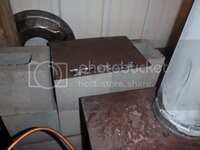
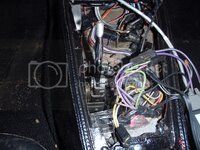
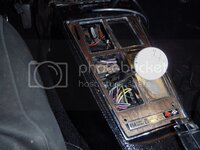
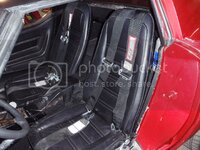
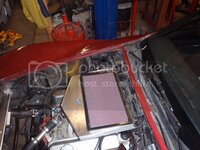
When the inner u-joint is lower than the outer any bump motion raises the wheel. This motion does increase the camber but it also moves the hub closer to the vehicle center line (as the angle between the half shaft and ground increases the cosine decreases) The fancy pivot on the trailing arm accomodates the motion but the shim packs fix its position. The trailing arm pivots around your ball joint and since the hub moves in the wheel toes out. Increased toe out is not a desirable condition.
When the inner u-joint is above the outer the first part of the bump moves the hub out (smaller angle bigger cosine) so it induces more stable toe in error. Once past center in the bump the toe change with travel reverses back through the start setting and then to increase toe in as above.
The initial setting of the ride height so the inner piuvot is higher than the outer give a range of motion where the toe change isn't evil. We can't overcome all the problem but we minimize it.
Grampy
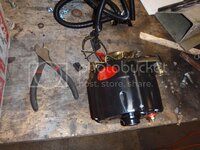
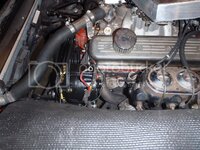
this should light someone up
more refinements
new alternator
installed, but, of course, nothing goes easily - those wires look terrible so I'll have to do some rewiring (ugh)
there used to be a company in the Pacific Northwest that changed its name about every 5 years or so - coincidentally with them being sued for the crappy alternators and starters they sold to the chain auto part stores. It's name was Powermaster at one point.... recently, I found out there is another Powermaster... they make quality stuff (solved a problem with one of my Search and Rescue trucks).... anyway... :hi::waxer:
That explains a lot of things, isn't it TT? :noworry:there used to be a company in the Pacific Northwest that changed its name about every 5 years or so - coincidentally with them being sued for the crappy alternators and starters they sold to the chain auto part stores. It's name was Powermaster at one point.... recently, I found out there is another Powermaster... they make quality stuff (solved a problem with one of my Search and Rescue trucks).... anyway... :hi::waxer:
That explains a lot of things, isn't it TT? :noworry:there used to be a company in the Pacific Northwest that changed its name about every 5 years or so - coincidentally with them being sued for the crappy alternators and starters they sold to the chain auto part stores. It's name was Powermaster at one point.... recently, I found out there is another Powermaster... they make quality stuff (solved a problem with one of my Search and Rescue trucks).... anyway... :hi::waxer:
seems like you can chase wiring forever and everywhere you touch it can be replaced
